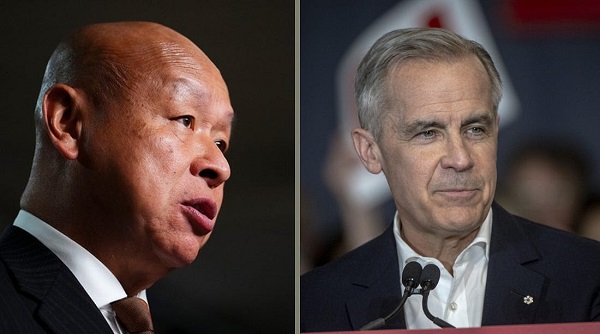City of Red Deer
Residential snow plowing accelerated by moving to 24/7 schedule

City of Red Deer announces pilot snow and ice control program
Once residential plowing is triggered, short-term, 24-hour per day parking restrictions will be implemented along residential routes. These restrictions will be enforced through ticketing and towing on both Green and Grey routes. Red Deerians will be notified of parking restrictions in a number of ways:
• Crews will place No Parking signs on every impacted street a minimum of 12 hours in advance of plowing,
• Residents can search their address via the mapping tool on The City’s website at reddeer.ca/snow,
• Residents will be alerted through Notify Red Deer, and
• Updates will be shared on The City’s social media channels.
Other improvements include increased service levels to the current trail clearing program, including an additional 25 km of the Waskasoo asphalt trail network, 10 new locations of shale trail and staircase clearing, and 68 more kilometres of neighbourhood asphalt trail clearing.
These networks will be cleared within three to six days, improving pedestrian and cyclist experience. Similarly, transit stops will also be cleared more quickly.

Changes to the overall program will focus on increasing the presence and effectiveness of pre-treating, plowing and sanding equipment on major arterials, hills and bridges before, during and after snowfall.
“To address icy driving conditions and provide greater traction control, we will be more aggressively sanding and salting our major roadways and high-risk spots,” said Sikora.
In June 2023, Council adopted the revised Integrated and Accessible Transportation Policy (IAATP), which focuses on providing the community with mobility services based on four guiding principles: safe, accessible, well-maintained and accountable.
The City is also launching a public consultation process on residential snow clearing operations. Residents are invited to provide input on the residential program, and how we can better meet the needs of the community throughout the winter. At the end of the program, all responses will be analyzed and summarized in a report. City Council will then review the findings to inform future snow clearing policies and operations. Visit engage.reddeer.ca to learn more.
For more information about the new snow and ice program, visit www.reddeer.ca/snow.
Frequently Asked Questions
- What’s changing this winter?
We are focused on restoring mobility and ensuring accessibility this winter. To improve our residential snow control program, we will be expanding our 24-hour operations to include residential routes. This means when a residential plow campaign is triggered, we will be working 24 hours a day, 7 days a week until all residential streets are cleared. This shift will reduce the amount of time it takes to complete residential plowing from approximately 20 calendar days in the past, to just 7 days per route.
2. What is changing related to transit clearing?
This winter, transit stops are being cleared sooner to restore mobility quicker. Priority 1 stops will be cleared within 1 day, Priority 2 by day 3, and Priority 3 by day 7.
3. What is changing related to sidewalk, staircase, neighbourhood & Waskasoo Park trails clearing by The City?
This winter, we are enhancing our trail and sidewalk clearing to restore integrated mobility sooner for pedestrians. Within three days of each snow event, we currently clear nearly 130 kilometres of public sidewalks throughout the city. Additionally, we are expanding to clear an additional 16km of Grey Route sidewalks (also known as second-side sidewalks), 68km of neighbourhood asphalt trails, 35km of Waskasoo Park Trails including several staircases.
To see a full map of where will be clearing, visit: Snow and Ice Control Sidewalk and Trail Clearing Map on reddeer.ca/snow
4. How much is this pilot going to cost The City?
Our annual winter maintenance operating budget is$6.7 million. Through this pilot program, we are looking at our entire operations to fit in the newly adopted Safety Maintenance and Mobility Hierarchies and are analyzing our operations and reporting on our costs this winter to determine our ongoing service commitments.
5. Why is this only a pilot, what’s the plan going forward?
We are making these changes in an effort to be responsive to the community’s mobility needs and feedback we’ve received in previous winters. However, we recognize it will be necessary to make adjustments. Throughout the winter, we will be asking for resident input on how the changes are working, and where additional changes might need to be considered. Following this winter, a revised recommendation and ongoing budget ask will go to City Council for consideration.
6. When will residential plowing begin?
We are focused on restoring mobility and ensuring accessibility this winter. A residential plowing campaign will be triggered when mobility is negatively impacted, with triggering factors including, but not limited to: snowfall, forecast, freeze/thaw cycles and snowpack. In previous years, snowpack was our only trigger, but this year we will be more responsive and flexible so we can restore mobility and improve accessibility sooner. This year, all Green Routes will be completed in advance of a Grey Route plowing campaign.
7. Will there be parking bans?
Yes. When a residential plow campaign is triggered, a parking ban will first happen on all Green Routes, and then on all Grey Routes. The parking ban will be in effect at all hours (including overnight) until a street is completed.
8. How will I know if there’s a parking ban?
When a parking ban is declared, there will be numerous ways to find out. Red a-frame ‘NO PARKING ANYTIME’ signs will be placed on every residential street (both Green and Grey Routes) in advance of plows coming through. These signs will be placed a minimum of 12 hours in advance of plowing, and residents cannot park until the signs have been removed. In addition to watching for signs, we encourage everyone to sign up for Notify Red Deer to get a text reminding you to move your vehicle. Other ways to find out include checking reddeer.ca/snow, following The City on Facebook/Twitter and staying in the know with local media.
9. What if I don’t move my car?
Vehicles left on the street when a parking ban is in effect will be ticketed and towed, including on Grey Routes (previously only Green Routes were signed). Avoid a ticket by moving your vehicle when a parking ban is in effect. Watch for signs on your street.
10. Where can I park during a parking ban?
Parking bans will first happen on all Green Routes, and then, when necessary Grey Routes. During a ban, vehicles must be parked off-street (such as in a driveway, garage, or parking lot) or on an alternately-coloured route until plowing has been completed on your street. Parking bans will be enforced 24 hours a day until the signs have been removed, signaling to residents they can return to on-street parking.
11. I don’t have off-street parking, what do I do then?
As per City Bylaw, every residence is required to have two off-street parking stalls. We encourage you to utilize these spaces. If you have more than two vehicles, you can park on the nearest street that is not signed with NO PARKING ANYTIME. Remembering, that Green or Grey Routes will not be cleared at the same time, and therefore will not have parking bans enforced at the same time.
To find the nearest route, visit reddeer.ca/snow. Alternatively, check with a neighbour to find out if they have an extra space they would be willing to share with you. If you have additional space, be a Snow Buddy and offer your neighbour space to park!
12. How do I know if I live on a Green or Grey Route?
Green and Grey Routes are how we distinguish the two types of residential streets we have in our city.
a. Green Routes are the busier roads in each neighbourhood and consist of collector roads and City Transit routes (streets, drives, etc). They typically have higher traffic volumes and provide access to residential streets. Often Green Routes have a yellow line painted down the centre.
b. Grey Routes are quieter residential streets (closes, crescents, etc) and typically have a lower traffic volume.
c. An address search and route finder is available on reddeer.ca/snow
13. Why do Green Routes have snow removed and Grey Routes are left with windrows?
Restoring mobility and ensuring accessibility are our first priorities. Green Routes have higher traffic volumes and additional uses including Transit, and are plowed with snow removed. On Grey Routes, we plow to a snowpack and place windrows on both sides of the street, with windrows openings to provide access to driveways, alleys, and at pedestrian crossings.
This winter, we will also be removing windrows from portions of Grey Routes in front of higher density (R3 Zone development) where off-street parking maybe limited. Previously Green Routes were always plowed to bare pavement and with this pilot program that may not always be the situation.
14. I have input on how you can do things differently!
Great! We encourage our citizens to get involved and share their perspectives, ideas and input throughout the winter at engage.reddeer.ca.
City of Red Deer
Red Deer will choose a new Mayor as Ken Johnston decides to step away

It’s a telling detail about the person who leads Red Deer City Council. Always putting the city’s needs ahead of his own, Mayor Ken Johnston has announced his intentions within days of the opening of Nominations for October’s municipal elections,
After 12 years on council, Mayor Ken Johnston has decided against running for a second term as Mayor this fall. Johnson shared his decision in front of colleagues and supporters in a touching announcement on Wednesday.
At 71 years old, Johnston remains vibrant, passionate and healthy. He says that’s exactly why he and his wife Carolyn have decided now is the right time to start their next stage of life together.
Mayor Johnston listed a number of highlights and achievements he can look back on, including his help advocating for the redevelopment of Red Deer Regional Hospital, the growth of Red Deer Polytechnic, and positive moves in Economic Development.
All these lead of a feeling of ease about the decision to step away, though affordable housing and a permanent shelter for the homeless remain pressing concerns.
With about 8 months remaining in his term, Mayor Johnston is planning to push hard to move the needle on these housing issues.
“We’re looking forward to some more work and we’ll be going to the community shortly about it. So I still have optimism that maybe before the term is out we can have an announcement.”
This is the second major political announcement in Central Alberta in the last number of days. Earlier this week Red Deer Mountain View MP Earl Dreeshen announced he won’t be running in the next federal election.
City of Red Deer
Council ends reduced fine option for early ticket payment, school and playground zones start at 7 AM

City Council approves first reading of updated Traffic Bylaw and General Penalty Bylaw
Red Deer City Council completed first reading of updated Traffic Bylaw (3707/2025) and General Penalties Bylaw (3036/A-2025) that will provide clarity and consistency in application of the bylaws as well as eliminate challenges in enforcement.
Key updates to the bylaws include:
- Ticket Pre-Payment:
- Removing the option to pay a parking ticket early to receive a reduced fee from the General Penalty Bylaw and adding it to the Traffic Bylaw.
- School and Playground Zone Start Times:
- Through investigating requests from schools to have school and playground zones start at 7 a.m., rather than 8 a.m., Administration determined that almost all school and playground zones in the city have students on the street prior to 7:30 a.m. To be consistent across the city, the start time is being moved to 7 a.m. providing an added measure of safety for all students.
- Salt on Sidewalks:
- Removing the provision prohibiting the use of salt on sidewalks as this provision was rarely reported and it is difficult and costly to enforce.
- Permits:
- More structure was added to the bylaw to clearly articulate conditions and requirements of Use of Streets Permits, as well as Excavation Permits and Alignment Permits.
- Lastly, fees for closures impacting on-street and off-street stalls have been adjusted to reflect the actual revenue in each parking zone rather than the flat fee.
- Penalties:
- Penalties have been reviewed and updated.
- During the last bylaw adoption, the penalty associated with vehicles being towed due to snow or street sweeping operations was inadvertently missed. This penalty has been added back in at a slightly higher amount due to an increase in the cost to tow a vehicle through The City’s contractor. This prevents the costs associated with towing vehicles during these operations from being subsidized by the tax base.
“These updates streamline the bylaws to create clarity for residents and administration,” said Erin Stuart, Inspections and Licensing Manager with The City. “They also help to eliminate regulations that are challenging to enforce and bring penalties in line with other City Bylaws.”
Second reading of both bylaws is anticipated for January 27, 2025.
-

 Business2 days ago
Business2 days agoDOGE discovered $330M in Small Business loans awarded to children under 11
-

 2025 Federal Election2 days ago
2025 Federal Election2 days agoThe High Cost Of Continued Western Canadian Alienation
-

 COVID-191 day ago
COVID-191 day ago17-year-old died after taking COVID shot, but Ontario judge denies his family’s liability claim
-

 Daily Caller2 days ago
Daily Caller2 days agoCover up of a Department of Energy Study Might Be The Biggest Stain On Biden Admin’s Legacy
-

 2025 Federal Election1 day ago
2025 Federal Election1 day ago2025 Federal Election Interference from China! Carney Pressed to Remove Liberal MP Over CCP Bounty Remark
-

 2025 Federal Election1 day ago
2025 Federal Election1 day ago2025 Election Interference – CCP Bounty on Conservative Candidate – Carney Says Nothing
-

 Business2 days ago
Business2 days agoCuba has lost 24% of it’s population to emigration in the last 4 years
-

 2025 Federal Election1 day ago
2025 Federal Election1 day agoPoilievre on 2025 Election Interference – Carney sill hasn’t fired Liberal MP in Chinese election interference scandal





